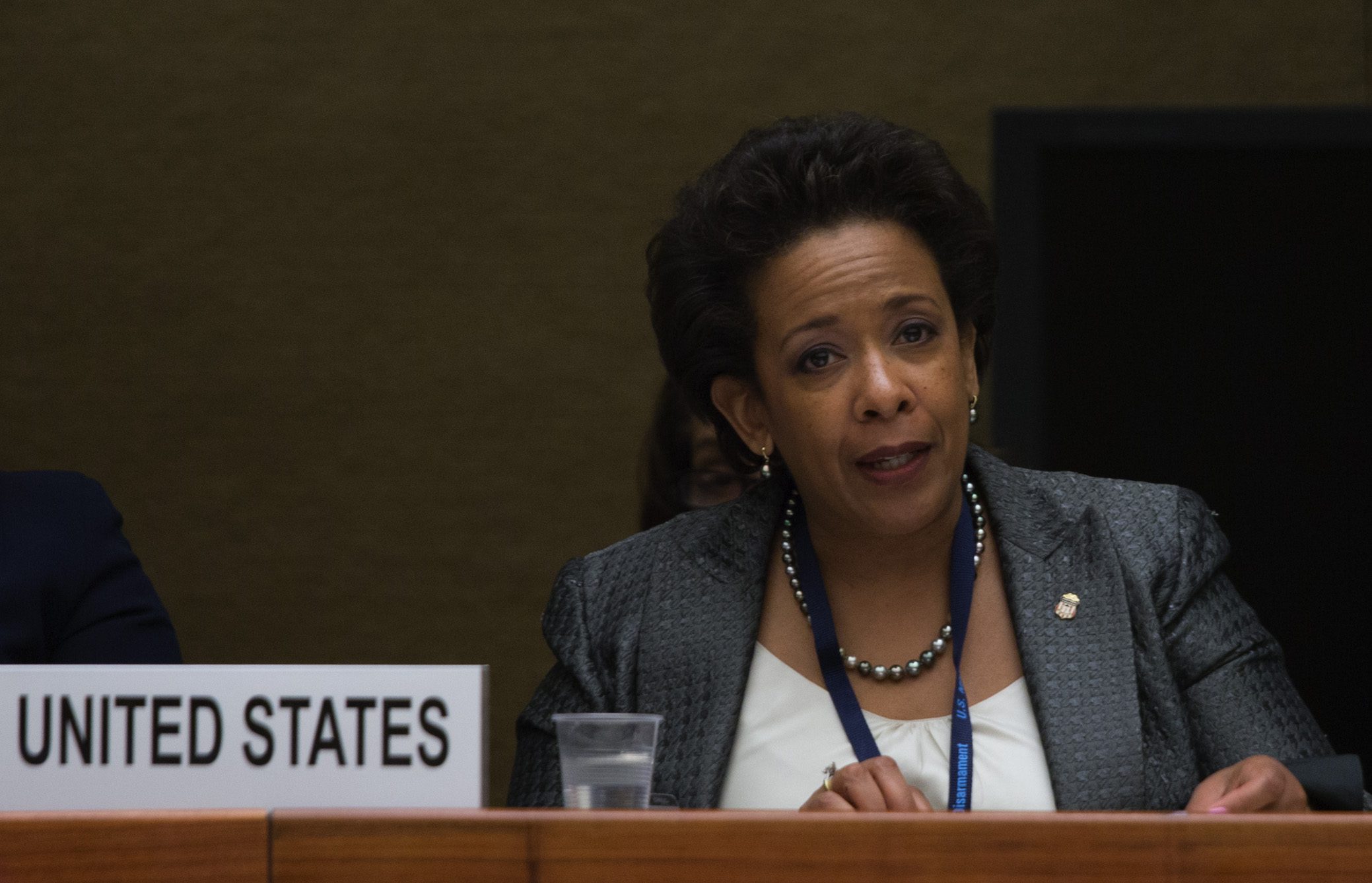CSG Justice Center Briefs Attorney General Lynch on Juvenile Justice Report
WASHINGTON, D.C.—Since its release in late January, action around a first-of-its-kind study of Texas youth involved in the juvenile justice system hasn’t slowed down.

On Friday, Texas Gov. John Abbott signed into law a bill modeled after recommendations in the report, which found that Texas youth under community-based supervision are significantly less likely to reoffend than those with very similar profiles who are confined to state correctional facilities.
That progress extended to the federal level on Monday, as the CSG Justice Center briefed newly appointed U.S. Attorney General Loretta Lynch on the study in her first meeting with the Coordinating Council on Juvenile Justice and Delinquency Prevention.
“I’m so pleased to see the focus on research,” Attorney General Lynch said after preliminarily reviewing the CSG Justice Center report. “Without this research, we don’t have a starting point for progress.”
“Closer to Home: An Analysis of the State and Local Impact of the Texas Juvenile Justice Reforms,” was released by the CSG Justice Center in January. The study found Texas witnessed a dramatic decrease in the number of youth in state-secure facilities, with a 65-percent reduction between 2007 and 2012. In turn, the state redirected millions in state funding to county juvenile probation departments. During the same time period, the report shows juvenile arrests also declined by 33 percent, a significant drop compared to the 2-percent decline over the four years prior to 2007 reforms.
The report found substantial evidence that counties could lower recidivism rates further by doing a better job applying the latest research, such as assigning youth to the right skill-building, treatment, and surveillance programs and providing appropriate levels of supervision.
Kentucky State Rep. John Tilley, a board member of the CSG Justice Center, emphasized to Attorney General Lynch that successful implementation of reforms like those in Texas, and similar changes he ushered through the Kentucky State Legislature in 2014, requires federal investment in resources on the front lines.
“I’m seeing first-hand that, when a foundation or the federal government can provide resources, it is put to tremendous use—despite public cynicism, it is put to tremendous use,” he said. “It helps us keep the train moving down the track.”
Tilley was joined by Utah’s Director of Juvenile Justice Services Susan Burke, also a CSG Justice Center board member, and Randy Turner, chief probation officer in Tarrant County, TX, to serve as a panel supporting the presentation of the report and provide insight into action in their respective states.
“We need to understand that the juvenile justice system is not just a mirror of the adult system and it should never ever try to emulate what the adult system is trying to do,” said Director Burke. “Our goal is not distribute punishment. Our goal is to help change lives, to help change young people’s futures and make them better.”
The briefing about this study comes on the heels of the Texas State Legislature’s swift action since the report’s release. Led by state Sen. John Whitmire (D-Houston), lawmakers approved Senate Bill 1630, which will redirect hundreds of juvenile offenders from remote, state-run youth lockups to regional and locally based supervision programs. The bill was signed by Gov. John Abbott on Friday, June 19.
After a number of abuses were uncovered involving youth incarcerated in state facilities, Texas state leaders enacted a series of reforms between 2007 and 2013. State leaders argued that many youth were incarcerated unnecessarily, and that supervising and providing treatment to juveniles closer to home, instead of shipping them to far-off correctional facilities, would produce better individual outcomes and save taxpayer money without compromising public safety.
In a closer examination of eight large Texas counties, the report found 298 of the 300 programs employed in these counties mix youth of different risk levels. Between 34 percent and 90 percent of youth who are considered to be at low risk of reoffending were placed in one or more programs, despite only a small fraction of these youth having a high need for such programs.
“While the recidivism data may be disappointing in one sense, it certainly is encouraging in that it gives us the ability to focus resources, focus efforts on these successful community programs,” said Attorney General Lynch. “The fact that we can, in fact, divert desperately needed dollars from the juvenile justice system into programs that work is key.”
Closer to Home was developed in partnership with Texas A&M University and funded by the Annie E. Casey Foundation, The Pew Charitable Trusts, and the U.S. Department of Justice’s Office of Juvenile Justice and Delinquency Prevention.
“The message that I hear from all of you is that this is an integrative, cohesive approach,” said Attorney General Lynch. “You are looking at the juvenile as a whole. You are looking at the juvenile as a member of the community, which I think is key toward gaining both community and family involvement and buy-in in your programs. And you are looking at this is as a process for prevented juveniles from entering the system in the first place.”
 New Hampshire Continues Justice Reinvestment Effort to Improve Conditions for People Who Are High Utilizers of Criminal Justice and Behavioral Health Systems
Read More
New Hampshire Continues Justice Reinvestment Effort to Improve Conditions for People Who Are High Utilizers of Criminal Justice and Behavioral Health Systems
Read More
 New Hampshire Commission Reviews Final Policy Recommendations to Reduce Reliance on Incarceration as Part of Justice Reinvestment Initiative
Read More
New Hampshire Commission Reviews Final Policy Recommendations to Reduce Reliance on Incarceration as Part of Justice Reinvestment Initiative
Read More
 Three Things to Know About New Jersey’s Groundbreaking Community Response Legislation
Three Things to Know About New Jersey’s Groundbreaking Community Response Legislation
In response to growing calls for police reform in New Jersey, particularly…
Read More












